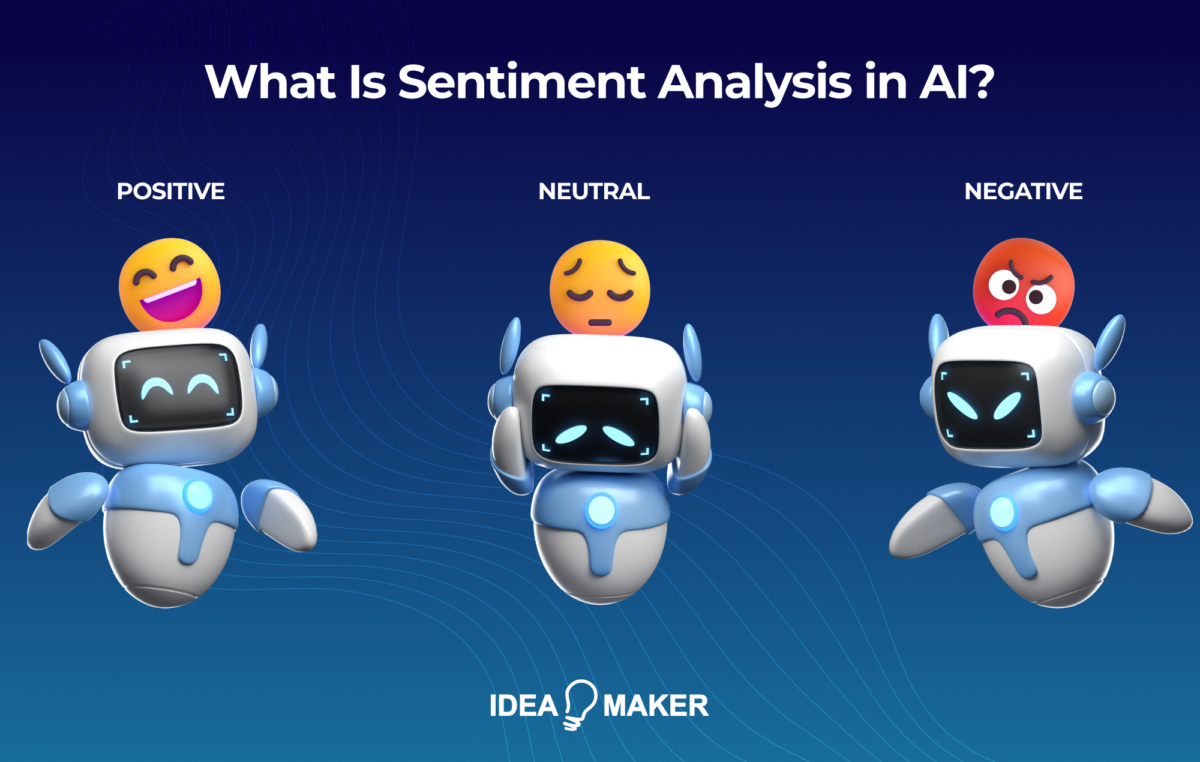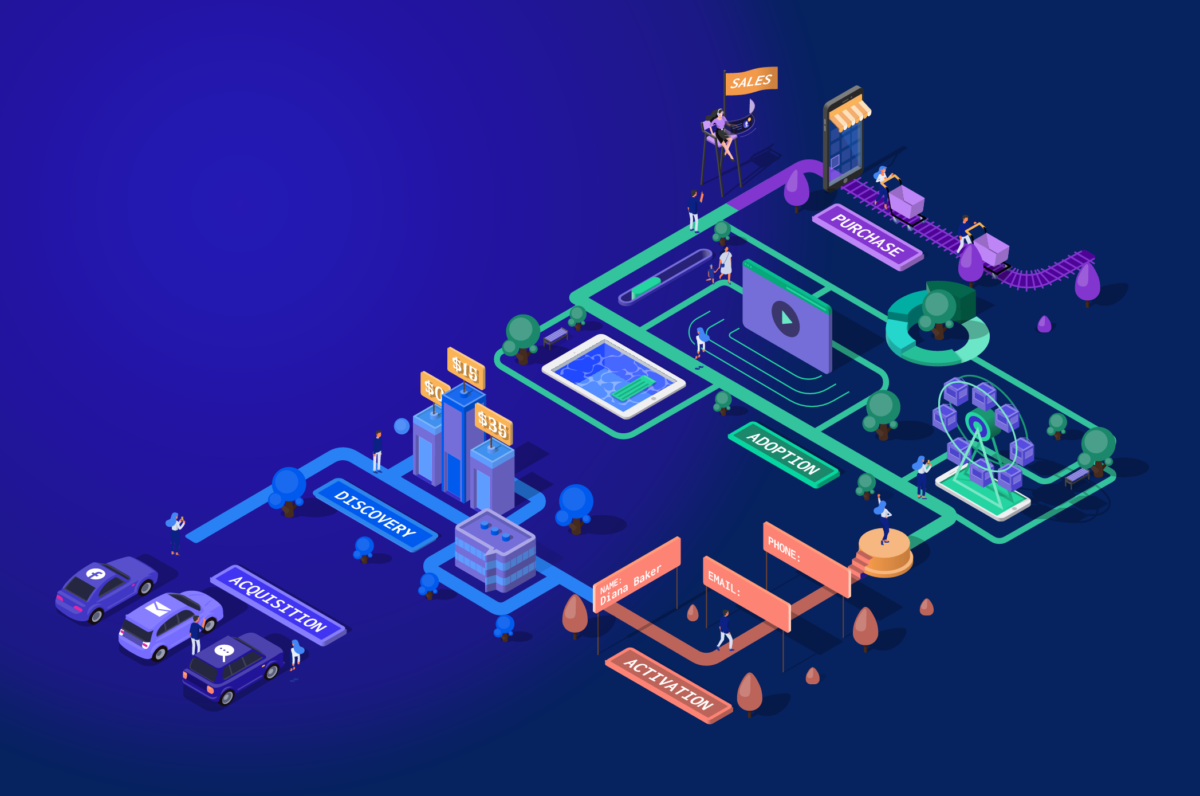
Curious About AI? Here’s How It’s Revolutionizing Marketing!
November 6, 2024
AI in Social Media Marketing: Engaging Audiences Like Never Before
November 7, 2024In today’s fast-paced digital world, brands face fierce competition to stand out, build loyalty, and deliver exceptional customer experiences. The secret? Understanding your customers—deeply and personally. This is where customer insights become invaluable. However, with so many interactions happening across various touchpoints (think websites, apps, social media, emails, and physical stores), relying on basic analytics alone often falls short. Metrics like page views, clicks, or bounce rates provide a surface-level understanding of user behavior, but they rarely reveal the why behind those actions.
This is where advanced AI-driven marketing tools step in. Unlike traditional analytics, these tools harness the power of machine learning, predictive models, and vast data processing capabilities to give marketers a holistic view of customer behavior. Think of it like peeling back the layers of an onion—each layer provides deeper, more nuanced insights that drive smarter, more strategic decisions. AI-enabled tools don’t just tell you what happened; they help you anticipate what’s next, so you can respond proactively rather than reactively.
This blog will delve into five AI-powered marketing tools that go beyond basic analytics, offering data-driven insights and predictive capabilities. Whether you’re a marketer, data analyst, or business owner, these tools can help you make informed decisions and tailor your strategies to meet customer needs. Let’s explore each tool and understand how they can revolutionize your customer insights strategy.

The Need for Advanced Customer Insights
Why Basic Analytics Isn’t Enough
In the early days of digital marketing, basic analytics like page views, bounce rates, and click-through rates sufficed. They provided general information about customer behaviors and campaign performance, allowing marketers to make broad adjustments. But as digital channels multiplied, so did the complexity of the customer journey. Now, customers interact with brands across multiple platforms, making their journeys complex and non-linear. Basic analytics may capture certain behaviors, but they fall short of providing a comprehensive picture of each customer’s interactions and preferences.
Imagine a customer visits a brand’s website, engages with social media content, reads email newsletters, and even browses in-store—all before making a purchase. Basic analytics might capture these interactions in isolation, but they can’t connect them to form a single, unified view of the customer journey. This gap leaves marketers with limited insights and makes it challenging to understand why customers behave the way they do, where they drop off, or what drives their decisions.
Role of AI in Marketing
Here’s where AI changes the game. AI-powered tools use machine learning and complex algorithms to analyze large sets of data and uncover patterns and trends. They can even analyze customer data in real time, which helps businesses make quick, informed decisions. By studying customer behaviors across channels, AI can provide a 360-degree view of each customer journey. For example, an AI tool can recognize that a customer who engaged heavily on social media is more likely to convert if they receive a targeted email offer soon after. This insight lets marketers anticipate customer needs and improve their experience in a more personalized way.
Benefits of Advanced Insights
The insights generated from AI-driven tools can transform customer interactions. Here are a few key benefits:
- Enhanced personalization: With advanced insights, brands can create highly personalized customer experiences, from targeted ads to tailored product recommendations.
- Improved customer experience: AI insights enable brands to cater to each customer’s needs, resulting in higher satisfaction and loyalty.
- Increased retention rates: Identifying at-risk customers and re-engaging them with relevant offers helps reduce churn and boost retention.
- Competitive advantage: Brands that use AI insights to understand customer behavior better gain a strategic advantage over those relying on basic analytics alone.
The need for advanced customer insights is clear. To meet today’s marketing challenges, businesses must go beyond surface metrics and dive into the rich, actionable insights that only AI-driven analytics can provide.

Tool #1: Customer Data Platforms (CDPs) with AI Capabilities
Overview of CDPs
Customer Data Platforms (CDPs) are systems designed to collect, unify, and manage customer data from various sources. Imagine all the touchpoints a customer interacts with—websites, apps, social media, in-store visits, email campaigns, and customer service interactions. Each of these channels produces data that, when pieced together, tells a fuller story of the customer. Traditional data management systems often leave this data siloed, making it difficult to use effectively. However, with a CDP, data is centralized and organized into a unified view that can be easily accessed and used by marketing teams.
When equipped with AI capabilities, CDPs transform from simple data storage solutions into powerful engines of insight. AI-powered CDPs can analyze customer data in real-time, recognizing patterns and predicting behaviors. They can even help brands create targeted customer segments based on past interactions, preferences, and future likelihoods—essentially, personalizing experiences at scale.
Example Tools
Leading AI-powered CDPs include Segment and Treasure Data. Segment, for instance, integrates customer data across platforms and uses predictive models to inform marketing strategies. Similarly, Treasure Data leverages machine learning to improve segmentation and targeting. These tools enable brands to make data-driven decisions and execute them quickly, thanks to predictive insights and automation features.
Benefits of AI-Powered CDPs
AI-driven CDPs offer a multitude of benefits:
- Personalization at scale: With all data in one place, AI can recognize customer patterns and preferences, allowing marketers to craft personalized campaigns for larger audiences.
- Improved data accuracy: CDPs provide a more accurate view of customer behavior by unifying data across multiple channels, leading to smarter decision-making.
- Predictive modeling: AI-powered CDPs help brands anticipate customer needs, enabling proactive responses that build trust and improve satisfaction.

Tool #2: Predictive Analytics Platforms
Overview of Predictive Analytics
Predictive analytics uses historical and behavioral data to forecast future customer actions, allowing marketers to make data-driven decisions with greater accuracy. Unlike basic analytics, which simply describes past behavior, predictive analytics gives brands a look into the future, helping them answer questions like, “Which customers are most likely to make a purchase next month?” or “What’s the likelihood of churn for certain segments?” By analyzing patterns in existing data, predictive analytics platforms can build models that suggest probable outcomes, equipping marketers with the insights needed to create proactive strategies.
Predictive analytics in marketing can include customer segmentation, identifying high-value customers, predicting customer lifetime value (CLV), and recommending optimal timing for promotions. This forecasting ability enables businesses to optimize everything from ad spend to customer retention efforts, leading to more effective and efficient campaigns.
Example Tools
Prominent predictive analytics platforms include Salesforce Einstein and IBM Watson Analytics. Salesforce Einstein, for example, integrates predictive analytics across customer relationship management (CRM) activities, helping businesses anticipate customer needs and personalize interactions. IBM Watson Analytics uses machine learning to uncover patterns and build predictive models, making it valuable for everything from campaign management to resource allocation.
These tools make predictive analytics accessible to marketers without needing extensive technical knowledge, as they come with user-friendly interfaces and robust data visualization tools to communicate insights clearly.
Benefits of Predictive Analytics Platforms
Predictive analytics platforms provide several advantages:
- Increased forecasting accuracy: Predictive models use data trends to generate highly accurate forecasts, allowing marketers to optimize budgets and resources.
- Campaign optimization: By understanding which customers are likely to convert, marketers can allocate resources efficiently, focusing on high-return segments.
- Customer lifetime value insights: Predictive analytics helps identify high-value customers, enabling tailored marketing strategies to maximize long-term value.

Tool #3: AI-Powered Sentiment Analysis
Overview of Sentiment Analysis
Sentiment analysis interprets customer emotions and opinions from text data such as social media posts, reviews, and feedback forms. Using natural language processing (NLP), sentiment analysis tools can determine the tone—positive, negative, or neutral—behind customer comments. For brands, this offers an invaluable way to gauge customer satisfaction and understand public perception in real-time, allowing them to respond quickly to emerging issues or capitalize on positive feedback.
With AI-powered sentiment analysis, brands can go beyond raw customer feedback and gain actionable insights. By analyzing keywords, phrases, and context, AI can help businesses understand how customers feel about products, services, or specific experiences. This level of insight is essential in industries where public sentiment heavily influences brand reputation, such as retail, hospitality, and consumer goods.
Example Tools
Notable sentiment analysis tools include MonkeyLearn and Lexalytics. MonkeyLearn uses NLP algorithms to classify and interpret text data, enabling brands to understand customer sentiment at scale. Lexalytics offers sophisticated sentiment analysis with industry-specific dictionaries and customization options, making it ideal for businesses with specific language needs or niche markets.
These tools enable brands to listen to their customers more effectively, with insights accessible in real time, empowering marketing teams to act immediately on feedback.
Benefits of Sentiment Analysis
The advantages of AI-driven sentiment analysis are significant:
- Enhanced customer understanding: Brands gain a deeper understanding of customer feelings, allowing for more targeted and empathetic responses.
- Real-time feedback monitoring: Sentiment analysis tools provide instant insights into customer opinions, helping businesses adapt their strategies swiftly.
- Proactive issue resolution: Identifying negative sentiments early allows brands to address customer concerns before they escalate, improving overall customer satisfaction.

Tool #4: Customer Journey Analytics Tools
Overview of Customer Journey Analytics
Customer journey analytics tools provide a comprehensive look at each step in a customer’s interaction with a brand, from initial awareness through to post-purchase engagement. Unlike traditional analytics, which focuses on isolated metrics, journey analytics tools help marketers visualize the entire path a customer takes, highlighting key moments and possible pain points. This allows businesses to understand not only what customers do but also why they behave the way they do.
By mapping out the customer journey, brands can identify gaps or friction points where customers might drop off or lose interest. AI enhances this process by identifying patterns across large volumes of data, showing marketers where engagement dips or which steps lead to higher conversions. This is invaluable for optimizing the customer experience and improving overall satisfaction.
Example Tools
Popular customer journey analytics tools include Adobe Analytics and Pointillist. Adobe Analytics offers detailed journey visualization and segmentation tools, allowing marketers to dive deep into the flow of customer interactions. Pointillist, on the other hand, specializes in mapping complex journeys across multiple touchpoints, helping brands see where customer journeys succeed or fail.
These tools provide a more holistic view of customer behavior, making it easier to identify patterns and improve the journey.
Benefits of Customer Journey Analytics
The advantages of customer journey analytics tools include:
- Improved customer experience: Brands can optimize each touchpoint to enhance the overall experience, reducing friction and increasing satisfaction.
- Enhanced journey visibility: Journey analytics make it easier to visualize the full customer lifecycle, helping marketers understand the complete impact of their efforts.
- Reduced churn: By identifying and addressing common pain points, brands can keep customers engaged and loyal.

Tool #5: AI-Driven Personalization Engines
Overview of AI-Driven Personalization
AI-driven personalization engines enable brands to create individualized experiences for customers, making interactions more relevant and engaging. By analyzing customer data and behavior, personalization engines use machine learning to determine what content, products, or messages are most likely to resonate with each individual. This approach allows brands to tailor experiences across touchpoints, from product recommendations to customized email campaigns.
Personalization at this level is crucial in today’s market, where customers expect tailored experiences. With AI, brands can move beyond simple segmentation and offer truly individualized interactions, making customers feel valued and understood.
Example Tools
Leading AI-powered personalization tools include Dynamic Yield and Optimizely. Dynamic Yield uses machine learning to recommend products, customize content, and optimize website layouts based on user behavior. Optimizely, known for its robust testing and optimization features, also enables brands to personalize experiences across different customer segments, helping improve engagement and conversions.
These tools allow brands to refine their marketing strategies and provide relevant content that keeps customers engaged.
Benefits of AI-Driven Personalization Engines
Personalization engines offer several benefits:
- Higher engagement: Tailored experiences resonate with customers, leading to increased engagement and interaction.
- Increased conversion rates: Personalized recommendations and offers are more likely to convert, boosting sales.
- Enhanced customer loyalty: Customers who feel understood and valued are more likely to remain loyal.
Conclusion
AI-powered marketing tools provide an edge in understanding and predicting customer behavior. From centralizing data with CDPs to analyzing customer sentiment and personalizing interactions, these tools enable marketers to go beyond basic analytics and build deeper relationships with customers. By leveraging AI, brands can create more engaging, seamless experiences that not only meet but anticipate customer needs.
For brands looking to stay competitive, embracing AI-driven tools is no longer optional—it’s essential. These tools offer insights that help marketers make informed, strategic decisions and deliver personalized experiences that customers expect. Investing in AI-driven marketing tools can yield significant ROI, transforming how brands understand, engage, and retain their customers.
Ready to elevate your marketing strategy? Explore these tools and consider integrating AI into your analytics to gain insights that go beyond the basics. It’s time to transform your data into actionable, customer-centric strategies that drive results.

